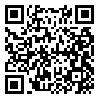BibTeX | RIS | EndNote | Medlars | ProCite | Reference Manager | RefWorks
Send citation to:
URL: http://jdisabilstud.org/article-1-848-en.html
Background & objective: Recently, there has been much interest in the relationship between audition and cognition. The new field of cognitive hearing science has highlighted the critical role of domain-general cognitive processes in supporting oral language comprehension and production. A lack of auditory stimulation negatively impacts the cognitive processes required to support spoken language. Two such methods that have been demonstrated to play a role in audio-visual speech comprehension are selective attention and visual processing speed. The studies show that deaf and hard of hearing children achieve lower results on the selective attention and visual processing speed tests when compared to children of normal development and early deafness can be reflected in the slower development of these skills. One of the methods for improving these skills is through the use of computer games. Here we consider the case of computer games as a tool to promote training-induced learning. Different computer games can enhance various aspects of cognition. The characteristics of the game itself are directly related to the types of processes that modified by playing the game (e.g., ability to effectively ignore distractors, speed of processing, monitoring of the periphery, tracking multiple moving objects, etc.). In this study, we used eye-hand coordination computer games to improve these skills. The child tries to use the mouse and keyboard to interact between the visual perception received from the screen and the motion of coordination. The children are initially uncertain and slow when using the mouse and keyboard; later, however, with repetition of these activities, they become faster and more dexterous. Although numerous studies have researched the effects of computers on the academic achievements of pupils, there are only a small number of studies examining the impact of computer game on visual processing speed and selective attention in deaf children. The study was performed to investigate the effectiveness of computer games on the visual processing speed and selective attention in deaf students.
Methods: This study was a quasi-experimental study with pretest-posttest design and with the control group. Thirty deaf children aged 7 to 10 years old were selected using convenient sampling method; these children selected among the clients of Loghman hospital and State Welfare Organization of Tehran. The criteria for those who entered the research were that they should all be the students of deaf schools, they have all received cochlear implants, and they should not have any other disability or incapability. The information related to their education level, physical health, and not having another disability and the amount of hearing loss extracted from the subjects rehabilitation files in the relevant center. The selected children divided randomly into two groups of experimental and control; every group included 15 children (7 girls and eight boys). All children in pretest and posttest evaluated via Continuous Performance Test. This test measures Visual processing speed and selective attention. The experimental group was taught by specialized computer games in 20 individual sessions of 50 minutes twice a week. Gathered data were analyzed using SPSS-21 software via ANCOVA.
Results: The findings showed that training by the use of specialized computer games has a significant effect on the improving selective attention of deaf students (p<0.001) and also on the Visual processing speed (p=0.006).
Conclusion: These results confirm the positive effect of computer games, in carefully selected and applied doses, on the development of the Visual processing speed and selective attention in deaf students. This training method can be suggested to the scientific community of education and rehabilitation for deaf children.
| Rights and permissions | |
 |
This work is licensed under a Creative Commons Attribution-NonCommercial 4.0 International License. |




